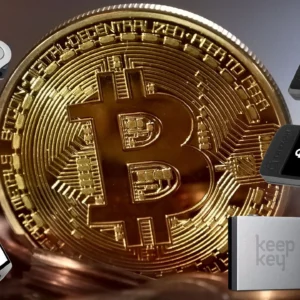Introduction
The Binance Smart Chain (BSC), now rebranded as BNB Chain, has long been a dominant player in the blockchain space, offering fast transactions, low fees, and a thriving ecosystem of decentralized applications (dApps).
In this article, we dive deep into BNB Chain’s transaction delays explained—analyzing why these delays are happening, the role of increased demand, and the potential solutions being implemented.
As the network continues to grow, understanding these issues is crucial for both casual users and blockchain enthusiasts.

1. Understanding BNB Chain’s Growing Popularity
Before diving into BNB Chain’s transaction delays explained, it’s important to understand why the network has been experiencing increased demand.
A. Low Fees and High Speed
One of the biggest advantages of BNB Chain is its affordability. Compared to Ethereum’s often high gas fees, BNB Chain provides a cost-effective alternative, making it an attractive choice for both developers and users. Its high transaction speed further solidifies its position as a preferred blockchain for everyday transactions.
B. DeFi and GameFi Growth
BNB Chain has become a hub for decentralized finance (DeFi) projects, non-fungible tokens (NFTs), and blockchain-based gaming (GameFi). Popular platforms such as PancakeSwap, Venus, and Mobox operate on BNB Chain, drawing millions of users and transactions daily.
C. Increased Adoption of BNB
As Binance continues to expand its ecosystem, the use of Binance Coin (BNB) has surged. From paying for transaction fees to staking in DeFi projects, BNB’s utility is growing, bringing more users onto the network.
While this increasing demand is a sign of BNB Chain’s success, it has also led to congestion, causing transaction delays that have frustrated many users.
2. BNB Chain’s Transaction Delays Explained: Why Are They Happening?
Despite its high-performance design, BNB Chain has been struggling with network congestion, leading to longer confirmation times for transactions. Here’s a look at the key reasons behind these delays.
A. High Transaction Volume
With millions of transactions occurring daily, the network is reaching its processing limits during peak hours. Unlike Ethereum’s Layer 2 scaling solutions, BNB Chain still relies on its core infrastructure, which can get overwhelmed when traffic surges.
B. Bot Activity and Network Spam
Automated trading bots and spam transactions contribute significantly to congestion. Many DeFi platforms experience heavy bot activity, where automated scripts execute multiple transactions in milliseconds, often clogging the network and delaying normal transactions.
C. Validator Limitations
BNB Chain operates on a proof-of-staked-authority (PoSA) consensus model, where a limited number of validators confirm transactions. While this model ensures faster block production and lower fees, it also means that when transaction volumes exceed the validators’ processing capacity, delays occur.
D. Smart Contract Complexity
Many dApps on BNB use complex smart contracts that require more computational power to execute. Transactions involving high gas fees or large contract interactions can slow down network performance, leading to delays for other transactions waiting in the queue.
With these factors in mind, it’s clear that BNB Chain’s transaction delays explained is not a simple issue—it’s a combination of rapid adoption, network congestion, and infrastructure limitations.
3. How Increased Demand is Reshaping BNB Chain
While transaction delays can be frustrating, they are also a sign of BNB Chain’s success. The growing demand is forcing the network to evolve, and several changes are already underway.
A. Network Upgrades and Scalability Improvements
To tackle congestion, Binance has been implementing various upgrades, including:
-
Optimized gas fees: Adjusting gas limits to better accommodate high-traffic periods.
-
Parallel processing: Allowing multiple transactions to be processed simultaneously to increase throughput.
-
Layer 2 solutions: Exploring off-chain scaling options to reduce on-chain congestion.
B. Increased Validator Participation
BNB Chain is considering expanding the number of validators to improve network security and transaction processing speeds. By increasing the number of active participants in the PoSA consensus, the network can handle a higher transaction load efficiently.
C. Adoption of Rollups and Sidechains
Similar to Ethereum’s rollups, BNB Chain is exploring Layer 2 solutions such as sidechains, which would offload some of the transaction burden from the main network. This could significantly reduce congestion and improve speed.
D. Enhanced Security Measures Against Spam Transactions
To mitigate bot activity and spam, Binance is working on mechanisms to filter out unnecessary transactions. This includes higher minimum transaction fees for certain types of interactions, ensuring that network resources are used efficiently.
With these advancements, BNB Chain is positioning itself for long-term sustainability, despite the current transaction delays.
4. What Can Users Do to Avoid Transaction Delays?
For those frustrated by slow transactions, there are several strategies to minimize delays and ensure smooth interactions on BNB Chain.
A. Optimize Gas Fees
While BNB Chain generally has low transaction fees, users can manually adjust their gas fees for faster processing. Increasing the gas price slightly above the network average can help prioritize transactions.
B. Use Off-Peak Hours
Transactions are usually slower during peak hours when network activity is at its highest. Performing transactions early in the morning or late at night (UTC time) can help avoid congestion.
C. Choose Reliable dApps
Some decentralized applications have better infrastructure to handle congestion. Users should research and choose dApps with efficient smart contracts and optimized transaction processing.
D. Monitor Network Status
Platforms like BSCScan and Binance’s official network status page provide real-time updates on congestion levels. Checking these tools before executing transactions can help users make informed decisions.
By following these best practices, users can navigate BNB Chain’s transaction delays explained and avoid unnecessary frustration.
Conclusion
BNB Chain remains one of the most widely used blockchain networks, but its growing popularity has led to congestion and transaction delays. As we’ve explored in BNB Chain’s transaction delays explained, increased demand from DeFi, NFTs, and gaming has pushed the network’s limits, requiring upgrades and new scaling solutions.
While Binance is actively working on improvements, users should be aware of congestion patterns and take steps to minimize delays when using the network.
As blockchain technology continues to evolve, scalability remains a crucial challenge, and how BNB Chain adapts will determine its long-term success.
What are your thoughts on BNB Chain’s congestion issues? Have you experienced delays, and how have you managed them? Share your thoughts in the comments below!







This Post Has One Comment